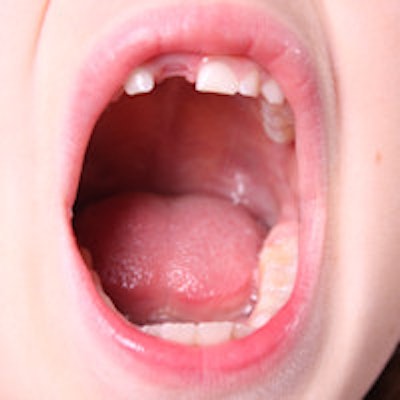
Significant numbers of Utah elementary schoolchildren have experience with cavities or have untreated dental decay requiring immediate care, according to the results of a new study. Many children are also lacking dental insurance or have not received required dental care because their parents could not afford it.
These are the results of the latest survey of children between the ages of 6 and 9 conducted by the Utah Department of Health. Conducted every five years, the survey includes a parent questionnaire and a dental screening exam of each child, with the results intended to guide the state's Oral Health Program to determine future activities, monitor trends, and improve the oral health of Utah children.
"We know oral health diseases are largely preventable, yet we are moving in the wrong direction," noted Shaheen Hossain, PhD, the primary author of the report, in a statement. "Along with increasing the access to needed services, we still need to educate parents on the importance of oral hygiene, nutritious diets with fewer sugary beverages, and getting routine dental care."
Dr. Hossain is manager of the Data Resources Program at the Utah Department of Health.
Untreated decay still a problem
The 2015-2016 Oral Health Survey was conducted between September 2015 and January 2016. The survey was given to parents of more than 5,100 children ages 6 to 9 in first through fourth grades in 47 randomly selected public schools in Utah.
The parents were asked to complete questionnaires focusing on the following:
- Dental insurance coverage
- Toothache and time since the child had seen a dentist
- Unmet dental needs and problems accessing dental care
- Source of drinking water
- History of fluoride supplementation
- Participation/eligibility for the free or reduced-price lunch program
- Demographic information on the child
The dental screenings were performed by dental hygienists using dental LED headlights in place of dimmer, portable dental overhead lights that were used in the 2005 and 2010 surveys. The overhead lights made it harder to identify tooth-colored restorations and tooth-colored or clear sealants, according to the authors.
The following were noted during the screening:
- Presence of cavitated untreated caries
- Presence of treated cavities
- Number of surfaces decayed, missed, or filled (primary and permanent)
- Presence of sealants on permanent molars
- Dental treatment needs
Of the parent questionnaires and consent forms handed out, 45% were filled out and returned. Of those, almost 90% of parents gave consent for their child to undergo screening. After excluding children who did not meet the study's age criteria, more than 1,900 underwent a screening. The researchers adjusted the data to be representative of the state.
They found that 66% of children ages 6 to 9 have experienced cavities, compared with the national Healthy People 2020 target of 49%. This year's results represent a significant increase from 52% of children having experienced cavities in the 2010 Utah survey.
Untreated tooth decay was found in 19% of children, up from 17% in 2010, yet better than the national target of 26%. Urgent care admission caused by oral pain and infection was needed by 2% of respondents.
The presence of dental sealants improved from 26% in 2010 to 45% in the current survey, well ahead of Healthy People 2020 goal of 28%. The lack of dental insurance improved to 18% from 22% in 2010. Also, 17% had not visited a dentist in the past year, and 2% had never been. Unmet dental needs were found in 4% of children, which was improved from the previous survey, with 46% of those saying that they could not afford it, and 30% that they lacked dental insurance.
The researchers found disparities in care and insurance coverage among children of Hispanic origin compared with other children, as well as in children of racial minorities. Children who qualified for the free and reduced-price lunch program also had substantially higher rates of cavities and untreated decay.

Greater access to care needed
The authors reported some limitations of the study's results:
- The questionnaire for parents was based on self-reporting, subject to recall bias, and could reflect underreporting or overreporting.
- The overall survey response rate was below 50%.
- Dental screening results could not be reported for each racial minority group because of small numbers.
They recommended several strategies to improve the oral health of children in Utah:
“Meaningful collaboration between dental and medical providers, public health programs, and schools will be needed to support policies and programs to prevent dental disease in children.”
- Increasing access to dental insurance and care
- Enhancing the public's understanding of the importance of oral health and its benefits to overall health and quality of life
- Improving coverage by educating families about Children's Health Insurance Program (CHIP), Medicaid, and other dental insurance
- Expanding access to community water fluoridation
- Expanding school-based caries prevention activities, such as fluoride varnish and sealant programs in elementary schools
- Providing better incentives and reimbursements to dental practitioners who see low-income people
- Focus on closing the dental care access gap by increasing awareness of existing community resources
"Oral health diseases are largely preventable by practicing good oral health behaviors, including routine oral hygiene, a nutritious diet, and receiving time-appropriate professional dental care," the authors concluded. "Meaningful collaboration between dental and medical providers, public health programs, and schools will be needed to support policies and programs to prevent dental disease in children."



















